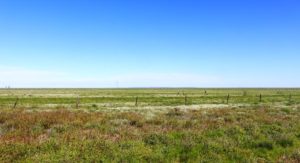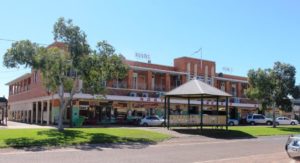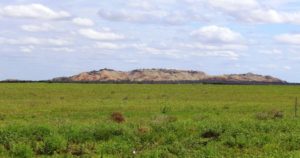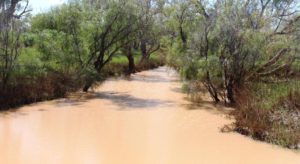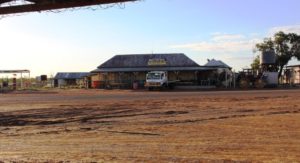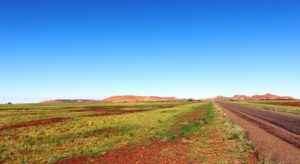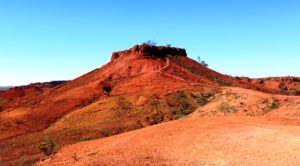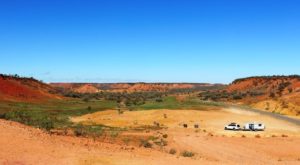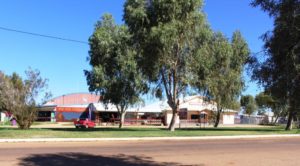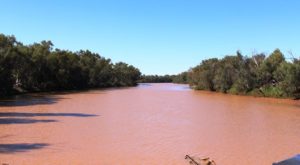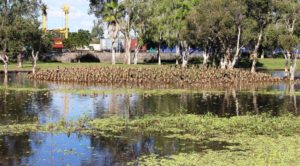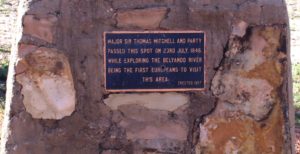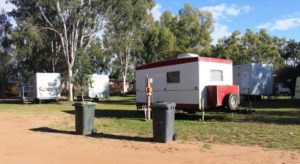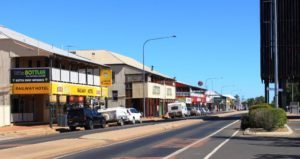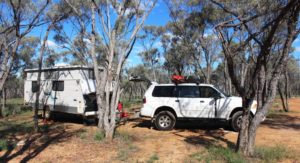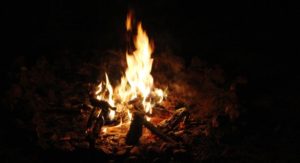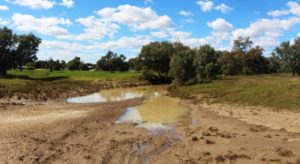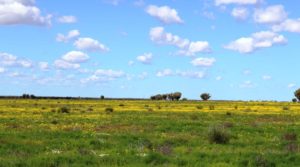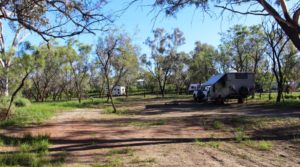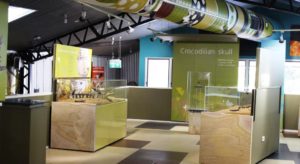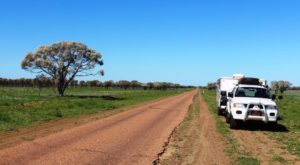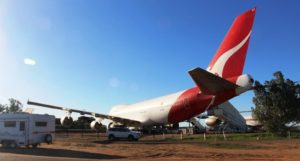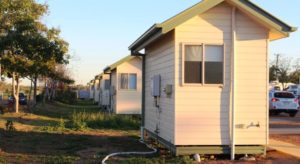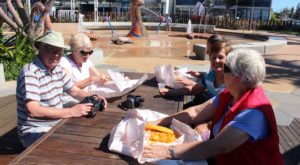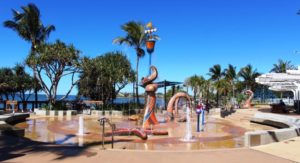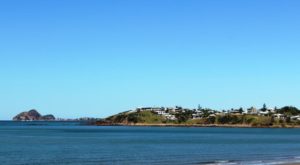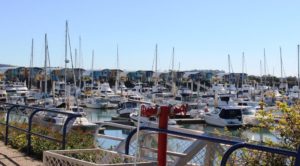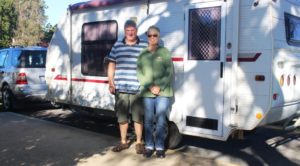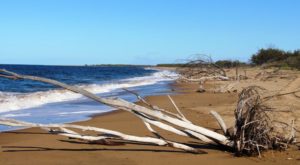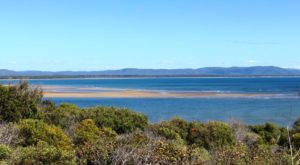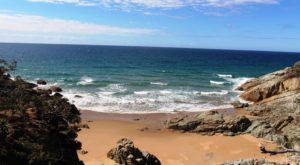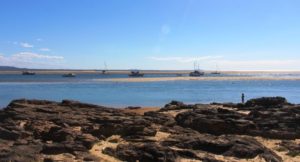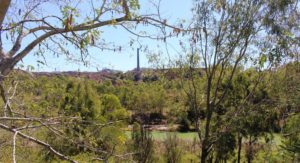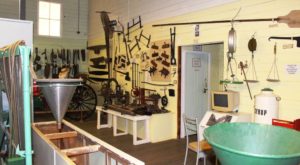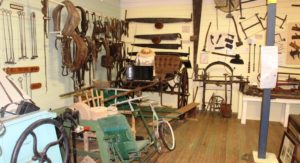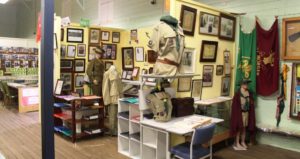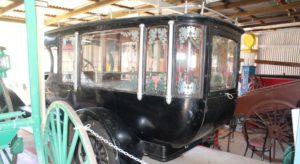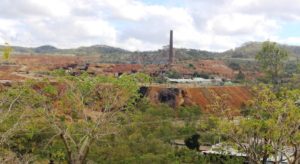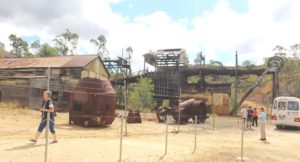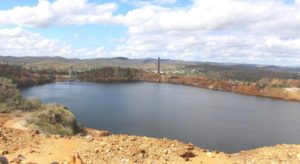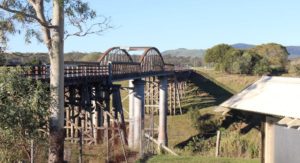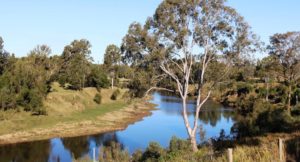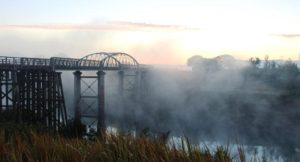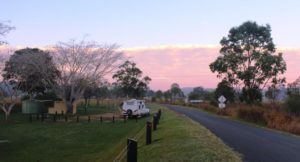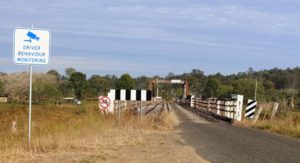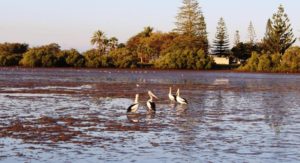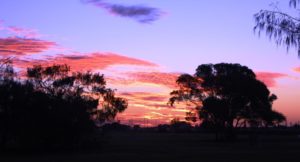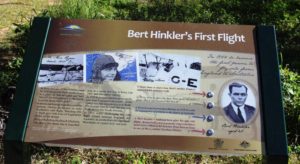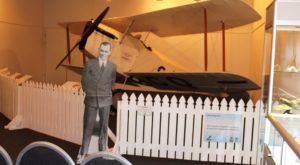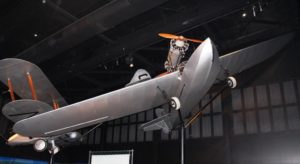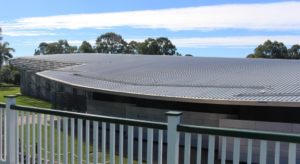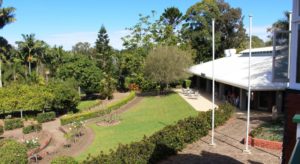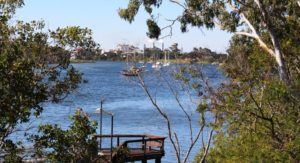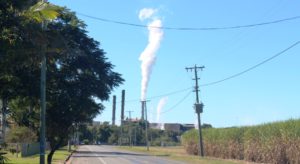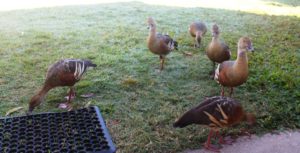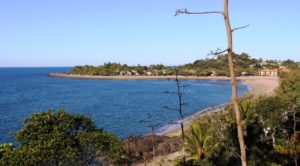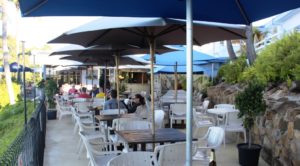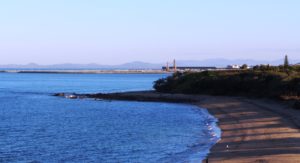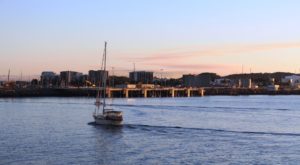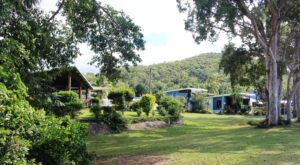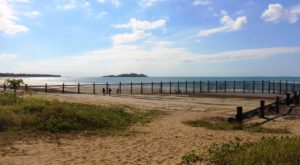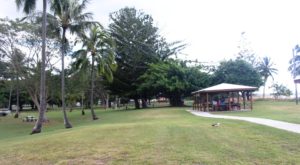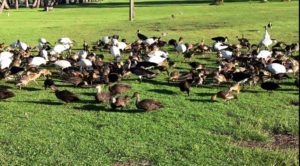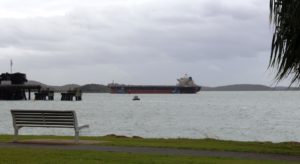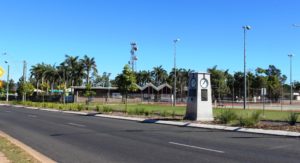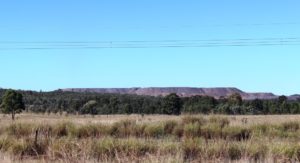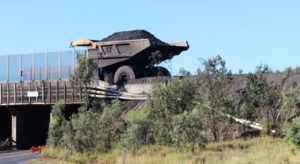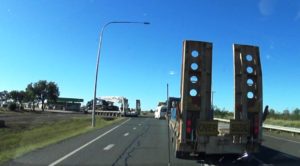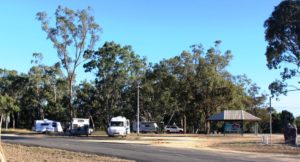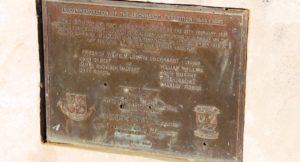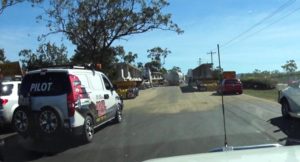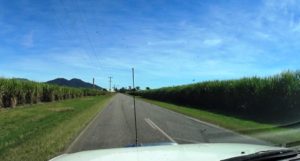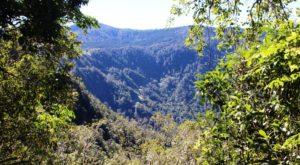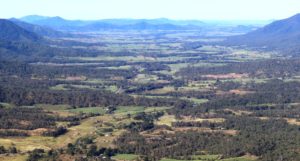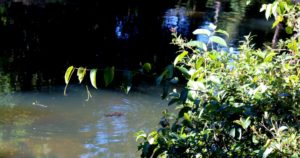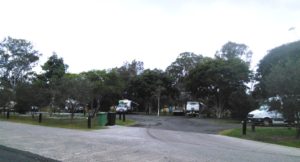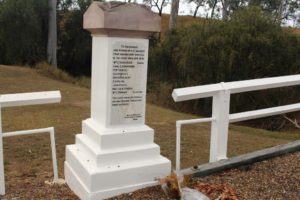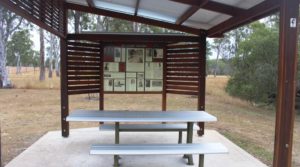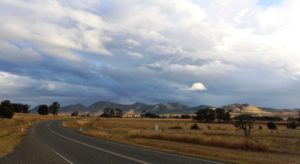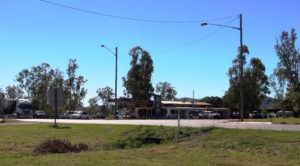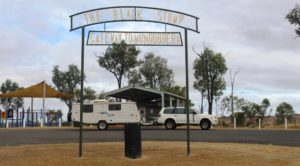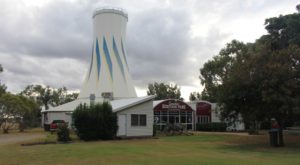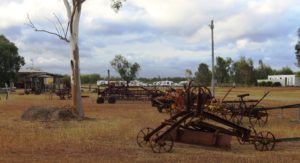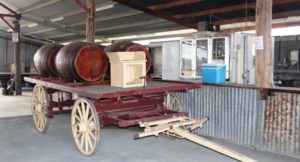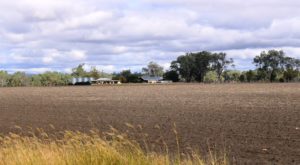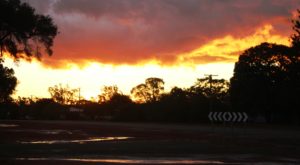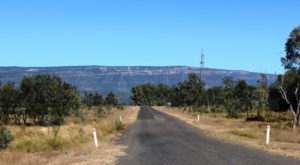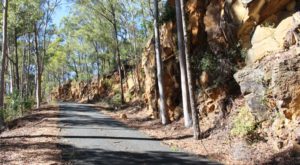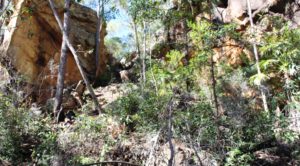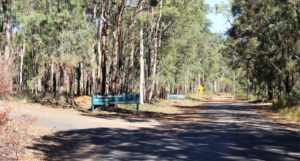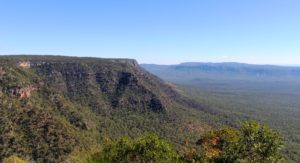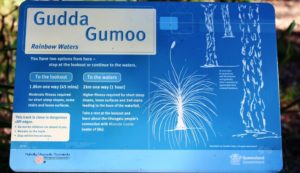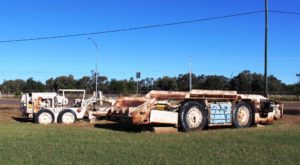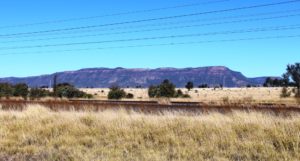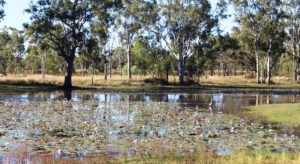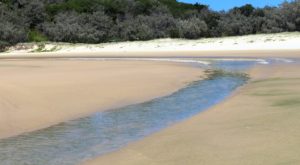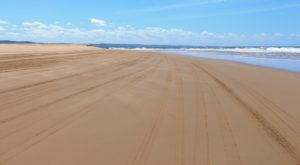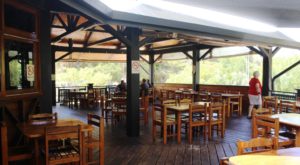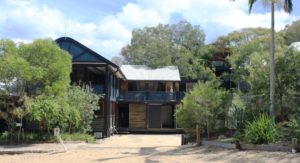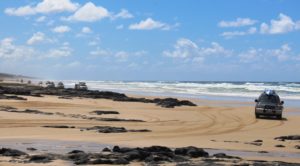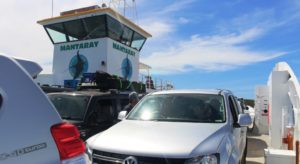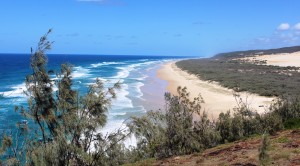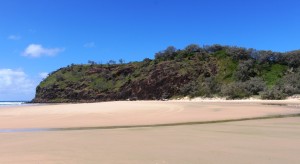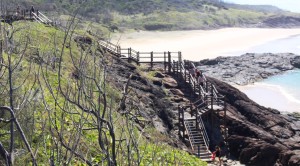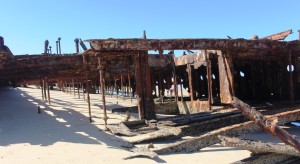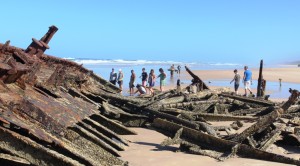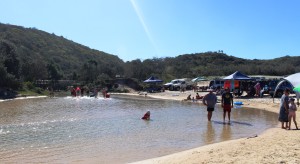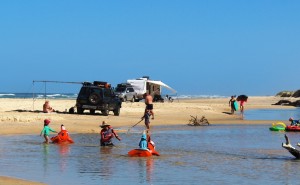It is not easy to predict the movements of the travelling public. On our first night at the Longreach Tourist Park the place was near to full. After we arrived, about mid-afternoon, the vans flooded in and flooded out again next morning. But on the second night
occupancy would have been no more than 40%. Perhaps folk had been in to complete the census. Forms were available at the office. We opted to complete it on line and couldn’t even log in. Perhaps we will try again at Alice Springs.
We left Longreach at the start of Day 18 driving towards Winton, about 180 kilometres to the North West.
Winton has always been a prosperous place but the drought has taken its toll. There are several empty shops in the main street. But the pubs continue to thrive. The Tattersals’ hotel that occupies a corner had about 20 tables set up for lunch on the pavement and more inside. Many caravans and their towing vehicles were parked in the street. Winton must be a favored lunch stop among grey nomads.
As some of you will know, Winton lost its famous Waltzing Matilda Centre to fire a year or so ago. That was a serious blow to the town. But they have bounced back with a new museum called the Qantilda Museum. It is much smaller, as a great deal of history was lost in the fire, but deals with Winton’s two main claims to fame. Winton is the birth place of Qantas Airways and Waltzing Matilda was written by Banjo Patterson at Dagworth Station to the north of Winton and was first performed in public at Winton’s North Gregory Hotel.
The “sweeping plains” continue to Winton and beyond. Green as far as the eye can see. But in most of the pasture there are no cattle eating the lush grass. Drought plays havoc with stocking density and it takes a long time to rebuild a production herd.
When we came this way last year on our way to The Centre, I said that the road from Winton to Boulia was one of the most attractive outback drives in Queensland and having done it a second time I have not changed my mind. Along the first section, until just past the multiple channels of the Diamantina River, the terrain is fairly flat. Some areas are so green with lush growth that they look like a planted crop. Then Mount Booka Booka appears to the left of the road. From there, for the next hundred kilometres or so, the road passes through the Sword Range which is mostly a series of jump ups, or mesas, with their defining crowns of red rock and slopes clad with small bushy vegetation of brilliant green.
Last time through we did Winton to Boulia, a distance of 360 kilometres, in a day. This time, having started the day at Longreach we have broken our journey at the lonely road side pub at Middleton. There was a town of Middleton but it is long gone and only the 130 year old hotel remains. Free camping is available over the road. Most who use the area express their appreciation by patronising the hotel.
We went over for a drink after setting up and then later, went back for dinner. Dinner guests included a couple from Taroom in Queensland on their way to Camooweal to help run the annual drovers festival. An other couple have just travelled the Birdsville Track and were able to give us some good information on road conditions.
The Middleton Pub is over 130 years old. The area was first explored by John McKinley who was leading a group searching for lost explorers Bourke and Wills. W Middleton was second in command. The area when opened shortly afterwards was named Middleton in his honour.
The publican and his wife are elderly but are assisted by younger family members. They were most welcoming. The menu was surprisingly extensive but we chose the “house” meal of corned beef with potato, cabbage and white sauce. The serving was generous. The facilities were basic with outside toilets and showers constructed of corrugated iron. The plumbing for the shower looked like a plumber’s nightmare but the rusty shower head was large and hot water cascaded out.
We went to sleep to the gentle lowing of cattle in a yard behind the hotel, probably waiting for a truck to take them to market.
The overnight stay at Middleton produced an unexpected bonus. Soon after leaving Middleton, jump ups start to appear on the horizon. The road turned towards them and as we drew closer the morning sun illuminated the red stone caps and eroded upper reaches turning them to shades of deep red. The green vegetation that clings to the slopes takes on a brilliancy that makes it look painted on.
A picnic shelter marks Cawnpore Lookout, a vantage point that stands above a cutting through the hills. To reach it you must scramble up a steep gravel path but the effort is well worth while. The views through 360 degrees are stunning. Those fitter than I can follow a path that leads to the very top of the jump up for even better views, I imagine. Accompanying photos illustrate.
From here the dramatic hills reduce in frequency. The final 80 kilometres or so into Boulia returns to endless green planes with scattered trees. The only dense vegetation lines the many water ways, most of which retain some of the recent rain.
We have reached Boulia and are in the caravan park, with the Bourke River only a few metres from the back of our van. Boulia is a small service town at the junction of Kennedy and Diamantina Developmental Roads. The Donohue Highway that leads to Alice Springs via the Plenty Highway branches off just out of town. The town has museum displays of dinosaur fossils and other items relating to the past when where Boulia stands was part of an inland sea. It also has the Min Min Experience, an animated show that tells of the mysterious Min Min Lights.
Weather has been brilliant. Morning temperatures have been around 10 C with day temperatures in the mid twenties. We experienced some cloud and a few spots of rain on the windscreen as we approached Middleton, but by evening the stars shone from a cloudless sky. But we have had some chilly breezes from east to south west, but they are easy to avoid or you put on something warmer.
Tomorrow we head south for Bedourie and Birdsville.

